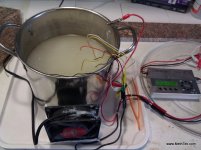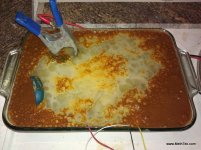methods
1 GW
My kits from Keywin shipped (at least the 24 fet kits) but my order with Green Time has been delayed. We tried to fit 10mm2 wires (7AWG equ) on the boards and it proved to be problematic. Not sure if they will arrive with 10mm2 or if we will need to drop back to 8mm2 - either should be more than overkill.
I have secured silicone end seals for the 6/12/18 fet Infineon controllers No more rotting black pig-rubber that crumbles after 15 minutes in the sun.
No more rotting black pig-rubber that crumbles after 15 minutes in the sun.
Matthew and I had a chat about using these new 24 fet controllers as an excuse to get a DIY anodizing tank running. I have all the gear to do a serious tank in a 50G 1/2 barrel - just been looking for an application. Results will probably look like a tie dye shirt but that sounds cool to me. My last Electrolysis machine was for rust removal... I dropped a pocket pistol that was rusted solid and got it working again.
View attachment 2


Ok... that is hardly an anodizing machine but an awesome use of the iCharger and same principle.
-methods
I have secured silicone end seals for the 6/12/18 fet Infineon controllers
Matthew and I had a chat about using these new 24 fet controllers as an excuse to get a DIY anodizing tank running. I have all the gear to do a serious tank in a 50G 1/2 barrel - just been looking for an application. Results will probably look like a tie dye shirt but that sounds cool to me. My last Electrolysis machine was for rust removal... I dropped a pocket pistol that was rusted solid and got it working again.
View attachment 2


Ok... that is hardly an anodizing machine but an awesome use of the iCharger and same principle.
-methods


